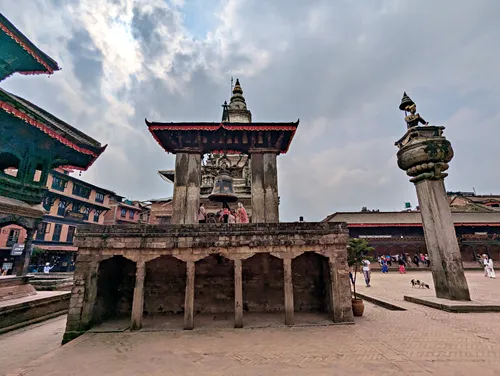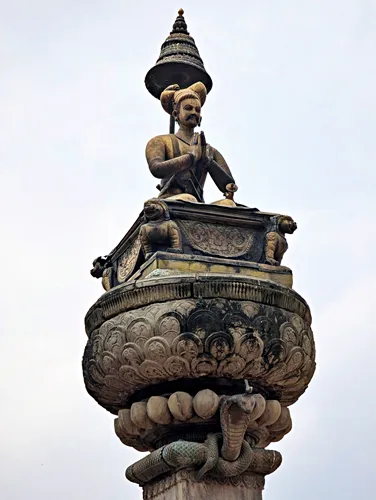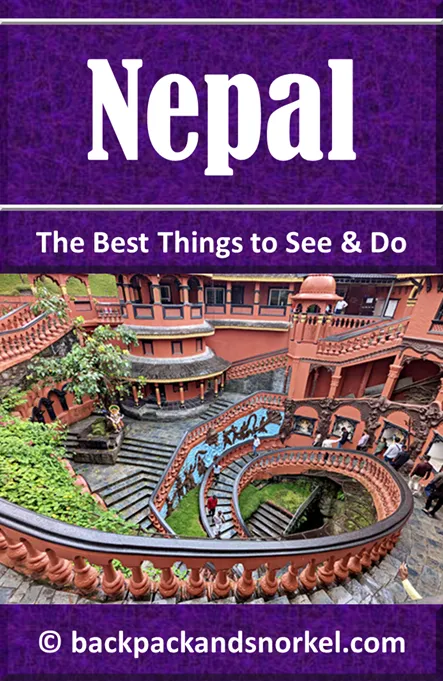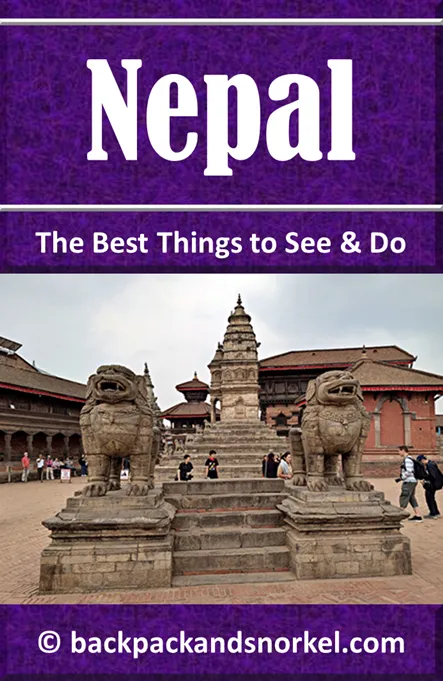King Bhupatindra Malla Statue: Your Guide to Bhaktapur's Royal Figure - Nepal Purple Travel Guide
(map, reviews)
This is Premium Content! To access it, please download our
Backpack and Snorkel Purple Travel GuideAmong the many architectural wonders of Bhaktapur Durbar Square, one monument stands out for its grace, symbolism, and deep cultural significance: the Statue of King Bhupatindra Malla. Positioned prominently on a tall stone pillar in front of the Golden Gate facing the Taleju Temple inside the Royal Palace, this iconic statue pays tribute to the most celebrated monarch of Bhaktapur’s Malla dynasty.


Here at Backpack and Snorkel Travel Guides, we typically promote self-guided walking tours.
But we realize that not everybody likes to walk by themselves in a foreign city. So, just in case that you rather go with ab guide: NO PROBLEM! Please see the Viator tours below.
free GuruWalk tours
paid Viator tours
Who Was King Bhupatindra Malla?
King Bhupatindra Malla ruled Bhaktapur during the late 17th and early 18th centuries and is remembered as a visionary patron of the arts, architecture, and religion. His reign marked a golden age of cultural and artistic achievement, during which many of Bhaktapur’s most important temples and palaces were built or renovated.
The statue immortalizes him in a devotional pose—hands pressed together in Namaste, facing the Taleju Temple, the royal deity of the Malla kings. This gesture reflects his piety and the deep spiritual connection between the monarchy and religion during the Malla period.
This gold-plated bronze statue, crafted by an artisan from Kantipur, depicts King Bhupatindra Malla seated in a devotional pose with hands folded in Añjali Mudrā, facing the Taleju Temple, the royal deity of the Malla kings. The statue sits atop a stone pillar adorned with symbolic elements, including a lotus throne and a gilt bronze snake wrapped around the column, with a bird resting on the snake's head.
Artistic and Architectural Significance of the Statue of King Bhupatindra Malla
The statue is crafted in gilded bronze and sits atop a tall stone column, similar to the style of royal commemorative pillars seen in Indian and Nepalese temple architecture. The base of the column features a lotus design, symbolizing purity and spiritual enlightenment. The statue’s attire, crown, and ornamentation are typical of Malla royalty, making it not only a devotional sculpture but also a historical portrait.
Art historians often praise the statue for its realistic detail and expressive elegance—an exceptional example of 18th-century Newar metalwork.
The gold-plated bronze statue of King Bhupatindra Malla, who ruled Bhaktapur from 1696 to 1722, sits atop a tall stone column near Golden Gate. The king is depicted seated in Vajrasana (a meditative pose) with hands in Añjali Mudrā (a gesture of reverence), facing the Taleju Temple inside the Royal Palace, the royal deity of the Malla kings. This devotional posture reflects his deep piety and mirrors similar statues of King Pratap Malla in Kathmandu and King Yog Narendra Malla in Patan.
Interestingly, the statue has a bullet hole in its leg - a historic remnant from the Battle of Bhaktapur in 1769, when the Gorkhali forces attacked during the unification of Nepal.
King Bhupatindra Malla is often regarded as the most illustrious of Bhaktapur's Malla rulers. He played a crucial role in shaping the city's artistic and architectural legacy, particularly within the Newar cultural tradition. In the statue, he is dressed in traditional Malla court attire, complete with a turban, sword, and shield, and is sheltered by a parasol (lightweight umbrella designed to provide shade from the sun) symbolizing royal dignity.
Although modeled after statues in Kathmandu and Lalitpur, this statue in Bhaktapur Durbar Square is widely considered the most elegant and artfully crafted of the three.
Back to your self-guided tour
Author: Rudy at Backpack and Snorkel
Bio: Owner of Backpack and Snorkel Travel Guides. We create in-depth guides to help you plan unforgettable vacations around the world.
Other popular Purple Travel Guides you may be interested in:
Like this Backpack and Snorkel Purple Travel Guide? Pin these for later:





